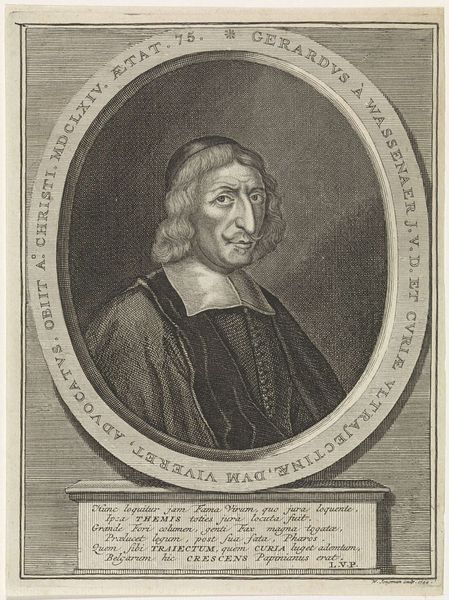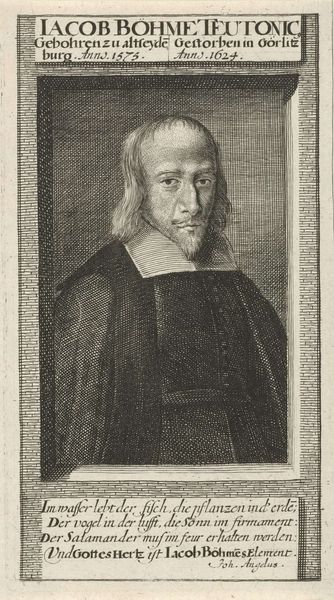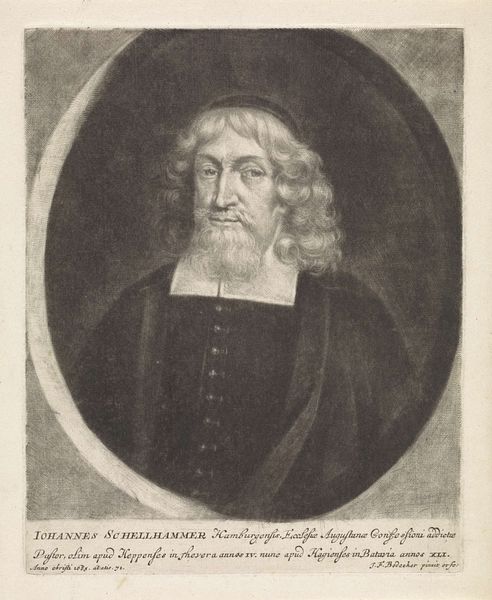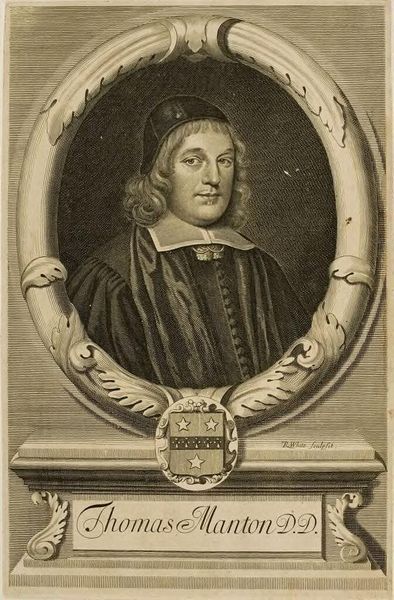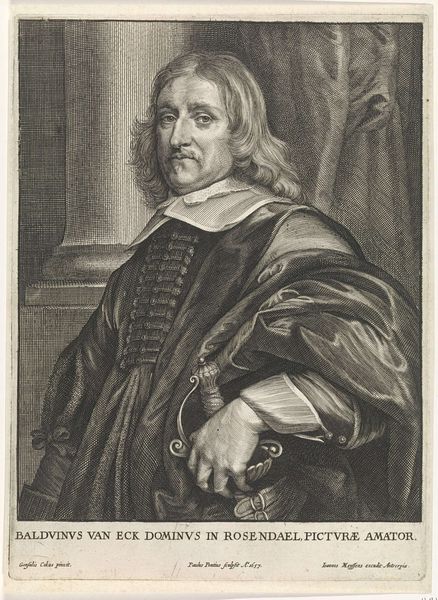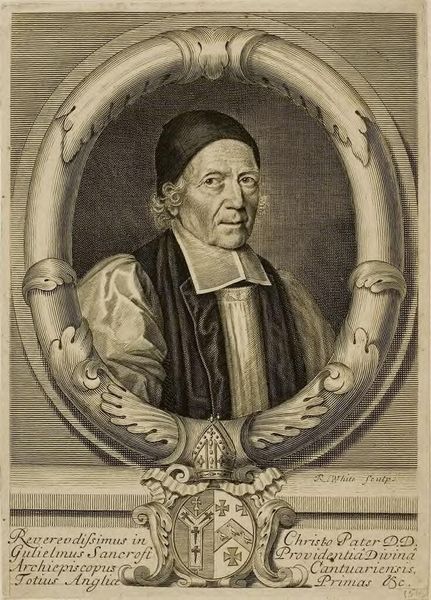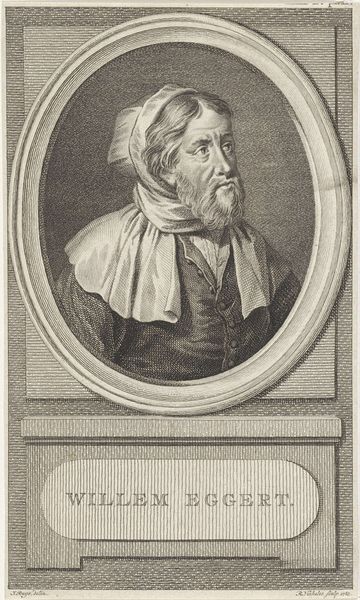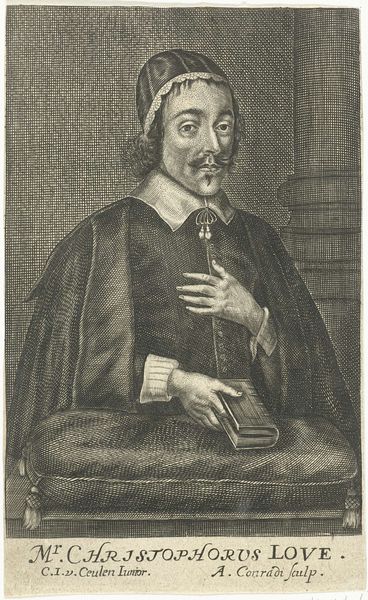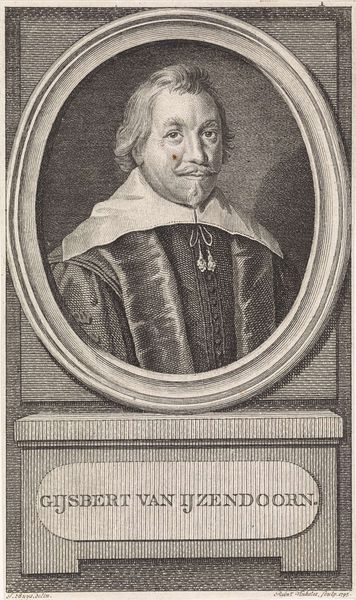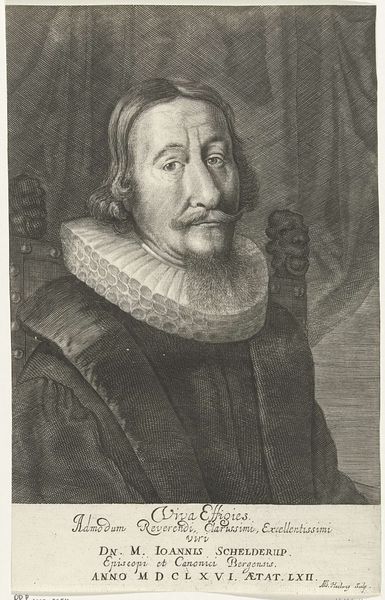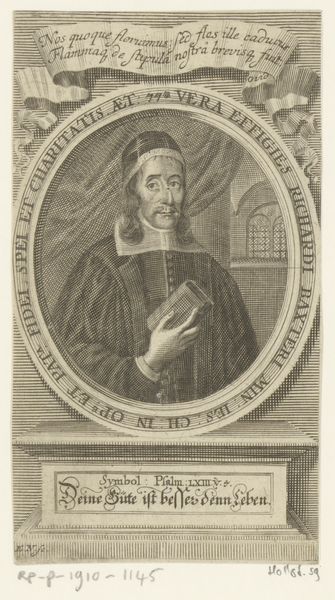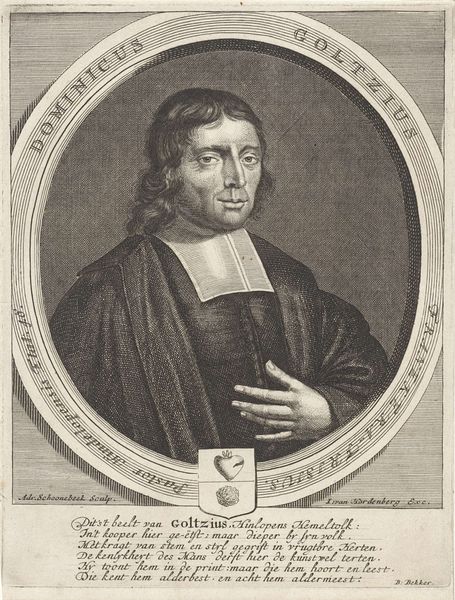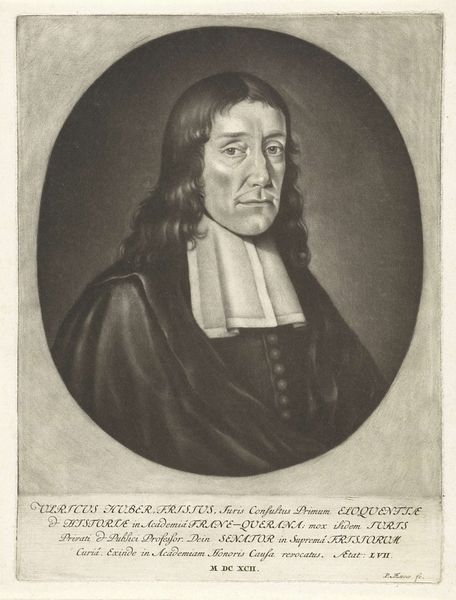
engraving
#
portrait
#
aged paper
#
baroque
#
portrait reference
#
history-painting
#
engraving
Dimensions: height 159 mm, width 98 mm
Copyright: Rijks Museum: Open Domain
Curator: What immediately strikes me about this image is its stark, almost severe, simplicity. The fine lines of the engraving create such texture, rendering a surprisingly contemplative mood. Editor: This is a portrait of Richard Sherlock, and it was crafted by Michiel van der Gucht, likely between 1670 and 1725. The portrait, which labels Sherlock as “Late Rector of Winwick”, provides insight into the intellectual and religious symbolism so prevalent at the time. Note how Sherlock is encircled in the ovoid frame; it suggests not merely an individual, but a symbol, perhaps of knowledge itself, enshrined. Curator: That oval enclosure creates a sort of window or even a reliquary for his image, underscoring that point. Look at the repetitive vertical lines in the lower register. It feels very rigid, reflecting, I suppose, the strictures of the church. Editor: I agree. The linearity almost seems to reinforce Sherlock’s solemnity. He's rendered in incredible detail; look closely at the shading around his eyes and mouth—such a testament to Van der Gucht's technical skill with engraving! Also the gaze – fixed, unblinking almost. It evokes authority but maybe even humility. Clergymen were key figures during that era and people were used to their omnipresence. The portrait may try to transmit this very specific relation and balance between secular and religious power. Curator: Indeed, the eyes seem to penetrate beyond the surface, right? It is the gaze of someone weighed down by knowledge and responsibility. Even his vestments, so meticulously depicted in black and white, carry symbolic meaning – power, yes, but also duty. Editor: One wonders about Van der Gucht's choices in portraying the ‘Late Rector’. There's a definitive stillness, an air of preservation. Is he attempting to capture Sherlock as a fixed, immutable figure within the context of shifting religious and political landscapes? Curator: Perhaps both artist and subject sought to capture a timeless image—one representing unchanging moral rectitude, a visual anchor in an era of societal change. The piece is evocative on several levels. Editor: It really speaks volumes about the role that symbols played during that period to convey psychological meaning.
Comments
No comments
Be the first to comment and join the conversation on the ultimate creative platform.
